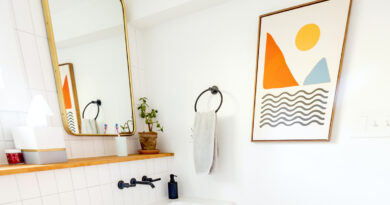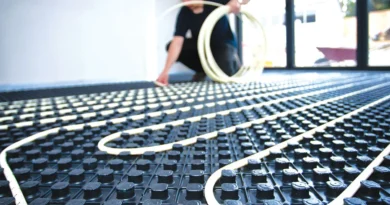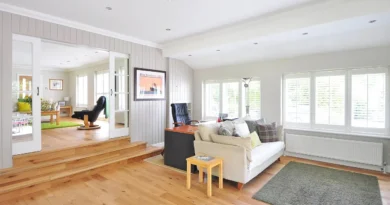The Journey of a Floor Installation, from Start to Finish
The floor installation sector is booming in Serbia, as per the latest data from the Association of Construction Industry. This association notes that the construction industry is currently employing approximately 186,000 workers, the largest portion of whom are engaged in specialized construction activities, such as flooring. Currently, flooring trends are closely tied to digital innovation and a growing consumer desire to create personalized, sensory spaces. The journey toward a beautiful floor begins with choosing the perfect flooring style.
Design Trends to Watch Out For
Biophilic design is one of the hottest trends in architecture, interior design, and flooring. This movement, born from the need to harness the benefits of the human-nature connection, prioritizes natural materials such as wood, stone, bamboo, and cork. Another big trend is the popularity of textured surfaces and natural grain patterns. Raw wood effects, distressed finishes, and embossed vinyl and laminate are achieving a new level of artistry and realism. Bold patterns, vibrant colors, and intricate layouts are also making a significant comeback; floors are now making statements and utilizing vivid patterns such as herringbone and chevron. Consumers are shunning cold gray in favor of warm, earthy hues such as beiges, greiges, forest greens, navy blues, and even deep terracotta. Finally, mixed materials (for instance, wood and tile) are back, making it easy for design lovers to blend two or three materials that catch their eye.
Designing and Visualizing the Floor
Across the globe, there is a growing demand for skilled constructors, handymen, and carpenters who can bring bespoke designs to life while also offering clients durability and impeccable craftsmanship. In the EU and countries like the US, the real estate sector is experiencing steady growth, driving demand for both interior architects and floor specialists. These days, savvy design firms are offering more than a promise of reliable installation specialists; they are also empowering clients to take a more proactive role in the design of their floors, thanks to technologies such as augmented reality, virtual reality, AI-assisted design and visualization, and 3D mapping technology. Clients can envision their future floors with a precise level of detail, ensuring they know exactly what the final result will look like.
Choosing Materials
The selection of flooring materials is very much influenced by the sustainability movement. Earlier, materials such as bamboo and cork were mentioned. They are popular choices because of their rapid renewability. Other sustainable materials include flooring made from recycled or upcycled content, like repurposed wood composites or even glass. More innovative choices include bio-based terrazzo, made from renewable materials such as castor oil, and green concrete, which contains recycled aggregates and has a significantly lower carbon footprint than its standard counterpart. Consumers are also on the lookout for durable, low-maintenance options, such as engineered hardwood, porcelain tiles, luxury vinyl plank (LVP), Luxury Vinyl Tile (LVT), waterproof and pet-friendly flooring (in materials like SPC and WPC vinyl), and self-healing flooring.
Measuring and Preparing the Surface
Once materials are chosen and the design is selected, flooring professionals can then assess the space, measuring the square footage, checking for unevenness, identifying transitions between rooms or levels, and determining if any prior work or demolition is needed. The flooring is then prepared. Old flooring is removed, and the surface sis cleaned and leveled. Depending on humidity levels, the professionals may apply an underlayment or moisture barrier to ensure the integrity of the finished floor.
Installing the Floor
The final stage of floor installation involves placing the new floor on the required surface. If a floating system is used, then click-lock systems will typically make the process quick and easy to complete. Engineered wood or vinyl tiles are glued down to the floor. Common solid hardwood is typically nailed down, while tile floors are fitted via mortar and grout. Once the main flooring is installed, the professional will complete the finishing touches, including the installation of baseboards, cleaning and polishing the surface, and meeting with the client to ensure their satisfaction.
Floor installation is a process that involves several stages, starting with researching trends and selecting materials. Once clients have an idea of their dream floor, they view several design options created by designers using tools like VR and AR. Next, it is time to clean and prepare the surface to be worked on. Finally, professional installers affix the material to the surface, ensuring that the floor is perfectly lined, polished, and ready for use by its happy new owners.



